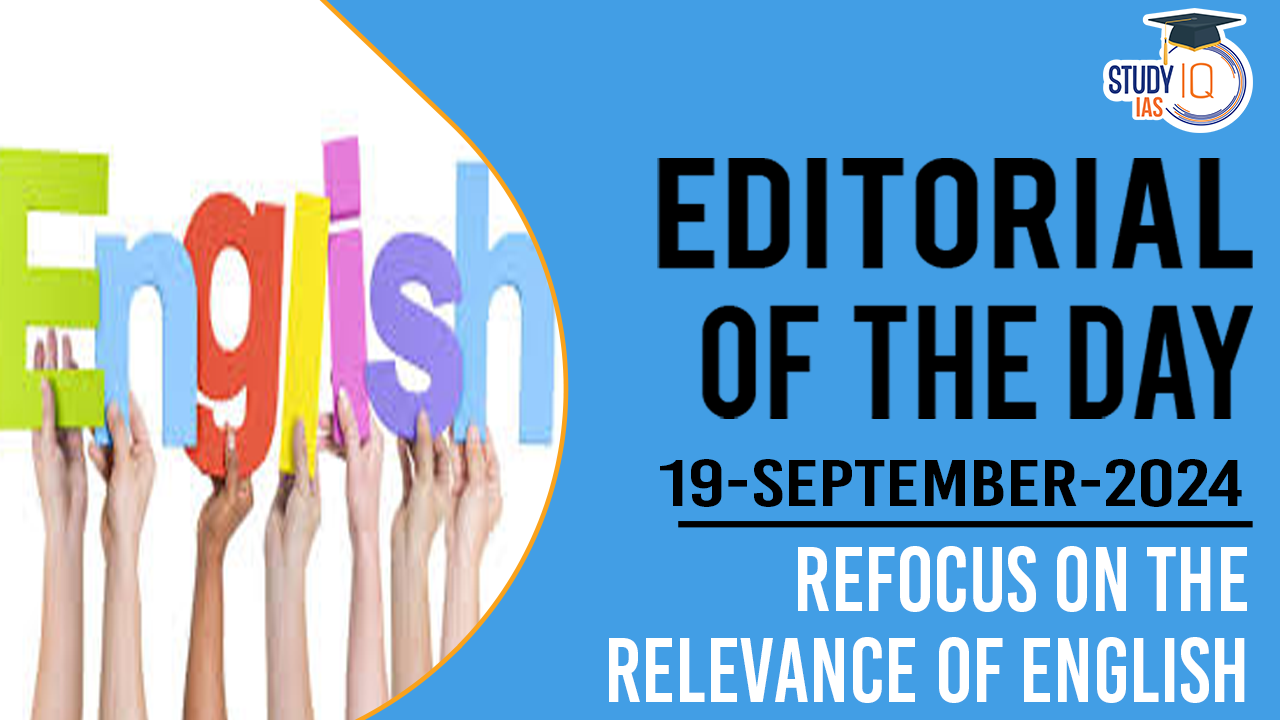Table of Contents
Context
- The aspiration of Indian parents for their children to speak English is widely recognized as essential for better socioeconomic opportunities.
- However, national education policies have historically neglected English language instruction, particularly in the context of the National Education Policy (NEP) 2020.
Historical Context and Current Policies
- Neglect of English Language Instruction: Since India’s independence, educational policies have often aimed to restrict the spread of English, viewing it as a foreign language rather than a tool for equality and socio-economic mobility.
- The NEP 2020 continues this trend by devaluing English and labelling it as foreign.
- Constitutional Safeguards: The Constitution of India recognizes English as an official language alongside Hindi.
- It recognizes the neutral and equalising role of English, safeguarding its position in society.
|
Fact |
Article 343 of the Constitution of India states that Hindi in Devanagari script is the official language of the Union. It also states that:
Official Languages Act, 1965: It provided for the continued use of English alongside Hindi for official functions of the central government. |
- Impact on Marginalised Communities: The neglect of English instruction has disproportionately affected marginalised children in government-run schools, perpetuating educational inequalities.
-
- The lack of access to English education contributes to a cycle of educational and socio-economic disadvantage for economically deprived groups.
| Fact |
| According to the 2011 Census, 90% of the Indian population does not speak any English, illustrating a significant linguistic divide that education policies have failed to bridge. |
Critique of NEP 2020
- Three-Language Formula: The NEP 2020 promotes a three-language formula that encourages linguistic diversity but is perceived as an attempt to establish Hindi as a dominant language while diminishing English’s role.
- This approach conflicts with the aspirations of millions who view English as vital for socio-economic mobility.
- Lack of Strategy for Disadvantaged Groups: The NEP does not provide clear measures to improve access to English for economically disadvantaged groups, exacerbating existing educational gaps.
- Historical Bias Against English: The anti-English sentiment can be traced back to post-independence efforts to establish Hindi as a lingua franca, which has historically marginalised English despite its importance in global communication and professional contexts.
Need for Pragmatic Language Policy
- Global Economic Engagement: Since economic liberalization in 1991, there has been a growing demand for English proficiency aligned with globalization trends.
- Ignoring this shift undermines India’s potential for economic growth and international engagement.
- Balanced Language Policy Proposal: A pragmatic approach would involve adopting a two-language formula that includes a regional language and English, allowing citizens to maintain cultural identities while enhancing global competitiveness.
- Learning from Other Countries: Countries like China have recognized the importance of English in their education systems, mandating its study to align with global economic shifts.
- India should adopt similar strategies rather than marginalising English.
Conclusion
The current trajectory of India’s language policy under NEP 2020 risks perpetuating educational inequalities and limiting socio-economic opportunities for large segments of the population. A more inclusive and pragmatic approach that promotes English alongside regional languages is necessary to ensure that all Indians can participate fully in the economy and society without linguistic barriers. Recognizing the constitutional significance of English while respecting India’s linguistic diversity will be crucial in shaping an effective language policy that meets the aspirations of its citizens.


 National Policy on Framework on Agricult...
National Policy on Framework on Agricult...
 How Scientists used Scotch tape to Creat...
How Scientists used Scotch tape to Creat...
 Vijay Hazare Trophy 2024, Schedule, Team...
Vijay Hazare Trophy 2024, Schedule, Team...




















